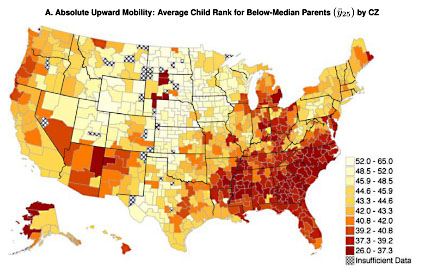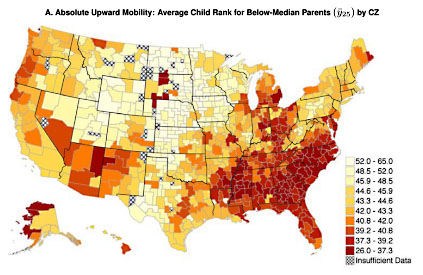
A new study confirms what I’ve been reading for a while now: income mobility in America hasn’t changed much in the past few decades. We continue to trail most other advanced economies, but at least things aren’t getting any worse.
Interestingly, it turns out that mobility changes fairly dramatically depending on where you grow up. The heat map on the right shows a measure of absolute mobility: the odds that a child of poor parents will move up the income ladder. Mobility is  highest in the Midwest, followed by the Northeast and the Pacific Coast. The authors conclude that there are five main factors that contribute to higher mobility:
highest in the Midwest, followed by the Northeast and the Pacific Coast. The authors conclude that there are five main factors that contribute to higher mobility:
High mobility areas have (1) less residential segregation, (2) less income inequality, (3) better primary schools, (4) greater social capital, and (5) greater family stability. While our descriptive analysis does not identify the causal mechanisms that determine upward mobility, the new publicly available statistics on intergenerational mobility by area developed here can facilitate future research on such mechanisms.
There are some other remarkable charts in the paper, including one that shows virtually perfect correlation between parent income and the odds of children attending college, and another that shows nearly as good a correlation between parent income and teen birthrates. (The teen birthrate correlation is inverse: the higher the income, the lower the birthrate.)
David Leonhardt has more here.















